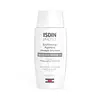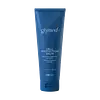What's inside
What's inside
 Key Ingredients
Key Ingredients

 Benefits
Benefits

 Concerns
Concerns

 Ingredients Side-by-side
Ingredients Side-by-side

Zinc Oxide 10.7%
Cosmetic ColorantWater
Skin ConditioningDiethylhexyl Carbonate
EmollientDibutyl Adipate
EmollientCyclopentasiloxane
EmollientDicaprylyl Carbonate
EmollientAlcohol Denat.
AntimicrobialCyclohexasiloxane
EmollientButylene Glycol
HumectantSilica
AbrasivePEG-30 Dipolyhydroxystearate
EmulsifyingNylon-12
Glycerin
HumectantPEG-10 Dimethicone
Skin ConditioningDimethicone
EmollientSodium Chloride
MaskingPhenoxyethanol
PreservativeIron Oxides
Disteardimonium Hectorite
StabilisingTriethoxycaprylylsilane
Panthenol
Skin ConditioningTocopheryl Acetate
AntioxidantGlyceryl Stearate
EmollientPropanediol
SolventParfum
MaskingBisabolol
MaskingDisodium EDTA
Ethylhexylglycerin
Skin ConditioningPEG-8
HumectantHydroxypropyl Cyclodextrin
MaskingTocopherol
AntioxidantLecithin
EmollientPlankton Extract
Skin ConditioningAscorbyl Palmitate
AntioxidantSodium Benzoate
MaskingAscorbic Acid
AntioxidantCitric Acid
BufferingPalmitoyl Tripeptide-38
Skin ConditioningPentapeptide-34 Trifluoroacetate
EmollientZinc Oxide 10.7%, Water, Diethylhexyl Carbonate, Dibutyl Adipate, Cyclopentasiloxane, Dicaprylyl Carbonate, Alcohol Denat., Cyclohexasiloxane, Butylene Glycol, Silica, PEG-30 Dipolyhydroxystearate, Nylon-12, Glycerin, PEG-10 Dimethicone, Dimethicone, Sodium Chloride, Phenoxyethanol, Iron Oxides, Disteardimonium Hectorite, Triethoxycaprylylsilane, Panthenol, Tocopheryl Acetate, Glyceryl Stearate, Propanediol, Parfum, Bisabolol, Disodium EDTA, Ethylhexylglycerin, PEG-8, Hydroxypropyl Cyclodextrin, Tocopherol, Lecithin, Plankton Extract, Ascorbyl Palmitate, Sodium Benzoate, Ascorbic Acid, Citric Acid, Palmitoyl Tripeptide-38, Pentapeptide-34 Trifluoroacetate
Petrolatum
EmollientSqualane
EmollientSaccharomyces Ferment Lysate Filtrate
Skin ConditioningButyrospermum Parkii Butter
Skin ConditioningRetinyl Palmitate
Skin ConditioningTocopheryl Acetate
AntioxidantPanthenol
Skin ConditioningBisabolol
MaskingYeast Beta-Glucan
Skin ConditioningCitrus Grandis Peel Oil
MaskingCitrus Aurantium Dulcis Peel Oil
MaskingPelargonium Graveolens Oil
MaskingRosmarinus Officinalis Leaf Oil
MaskingPhenoxyethanol
PreservativePetrolatum, Squalane, Saccharomyces Ferment Lysate Filtrate, Butyrospermum Parkii Butter, Retinyl Palmitate, Tocopheryl Acetate, Panthenol, Bisabolol, Yeast Beta-Glucan, Citrus Grandis Peel Oil, Citrus Aurantium Dulcis Peel Oil, Pelargonium Graveolens Oil, Rosmarinus Officinalis Leaf Oil, Phenoxyethanol
 Reviews
Reviews

Ingredients Explained
These ingredients are found in both products.
Ingredients higher up in an ingredient list are typically present in a larger amount.
Bisabolol is famous for its skin soothing properties. It does this by blocking inflammatory signals, helping to reduce your body's reaction to irritation.
This ingredient also interferes with the process of hyperpigmentation. This can help with reducing dark spots and uneven tone.
Bisabolol is an antioxidant. Antioxidants help fight free-radicals. Free-radicals are molecules that may damage your skin cells. By fighting these free-radicals, Bisabolol may slow down signs of aging.
Studies have shown Bisabolol to have antimicrobial properties and may be a fungicide. These properties help preserve a product's shelf life.
All these properties makes bisabolol a great skin barrier helper ingredient.
Bisabolol also helps the absorption of other ingredients.
Note: Synthetic Bisabolol has been shown to be less effective.
Learn more about BisabololPanthenol is a common ingredient that helps hydrate and soothe the skin. It is found naturally in our skin and hair.
There are two forms of panthenol: D and L.
D-panthenol is also known as dexpanthenol. Most cosmetics use dexpanthenol or a mixture of D and L-panthenol.
Panthenol is famous due to its ability to go deeper into the skin's layers. Using this ingredient has numerous pros (and no cons):
Like hyaluronic acid, panthenol is a humectant. Humectants are able to bind and hold large amounts of water to keep skin hydrated.
This ingredient works well for wound healing. It works by increasing tissue in the wound and helps close open wounds.
Once oxidized, panthenol converts to pantothenic acid. Panthothenic acid is found in all living cells.
This ingredient is also referred to as pro-vitamin B5.
Learn more about PanthenolPhenoxyethanol is a preservative that has germicide, antimicrobial, and aromatic properties. Studies show that phenoxyethanol can prevent microbial growth. By itself, it has a scent that is similar to that of a rose.
It's often used in formulations along with Caprylyl Glycol to preserve the shelf life of products.
Tocopheryl Acetate is AKA Vitamin E. It is an antioxidant and protects your skin from free radicals. Free radicals damage the skin by breaking down collagen.
One study found using Tocopheryl Acetate with Vitamin C decreased the number of sunburned cells.
Tocopheryl Acetate is commonly found in both skincare and dietary supplements.
Learn more about Tocopheryl Acetate